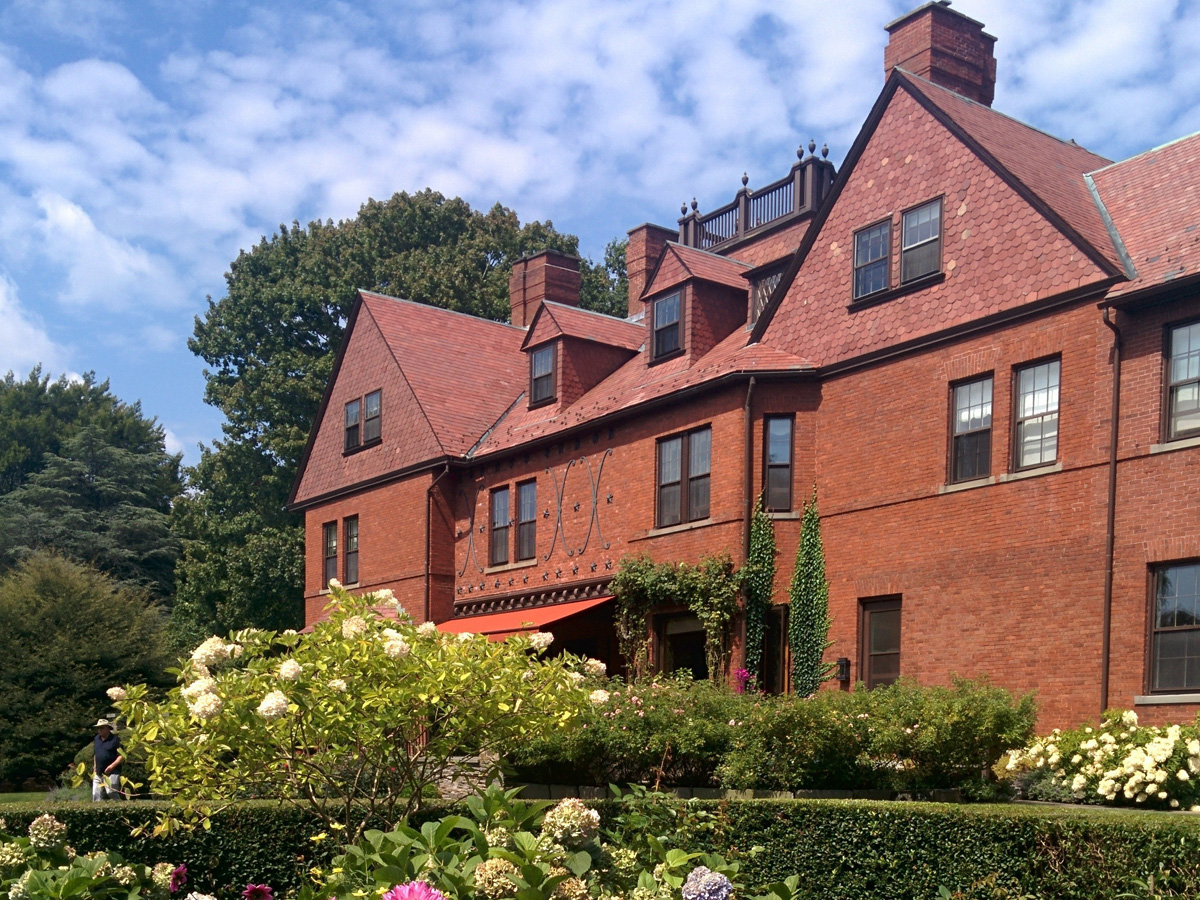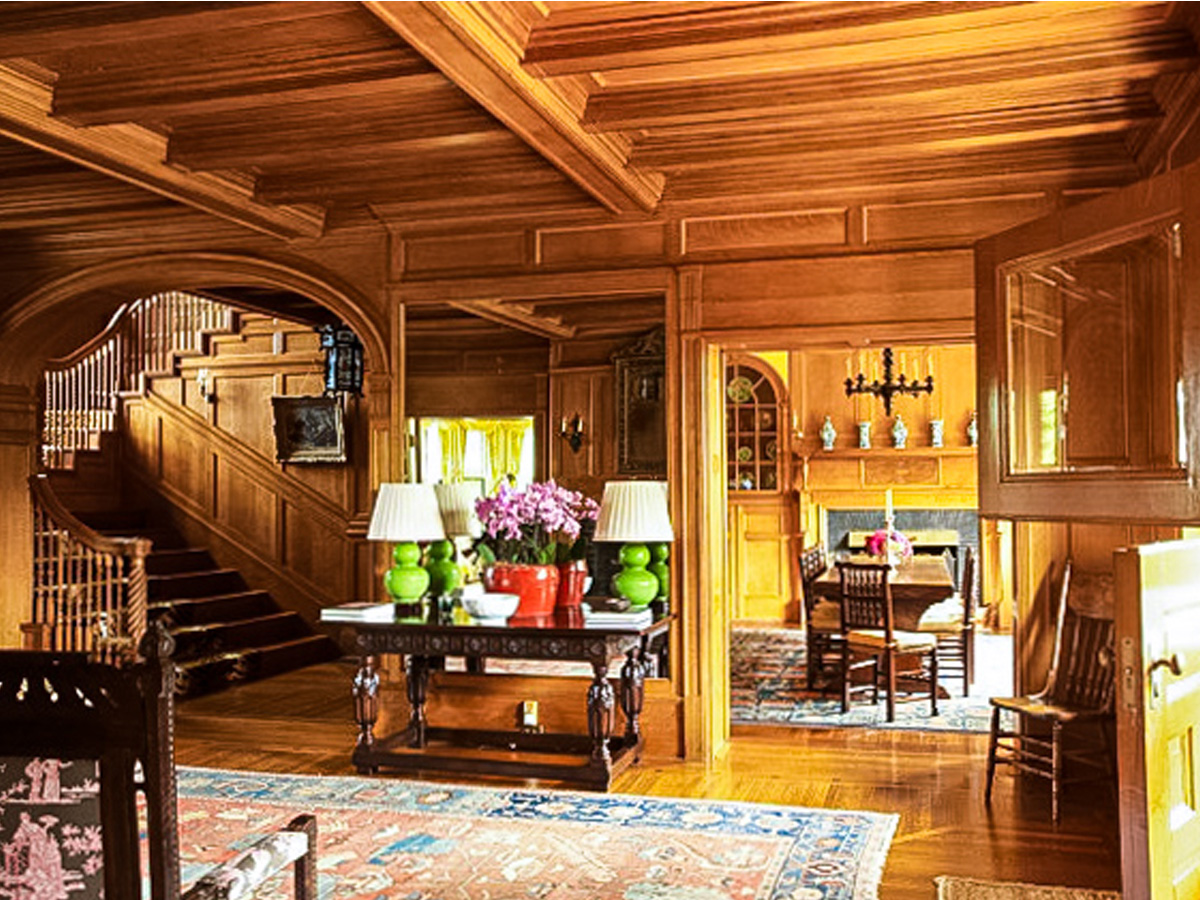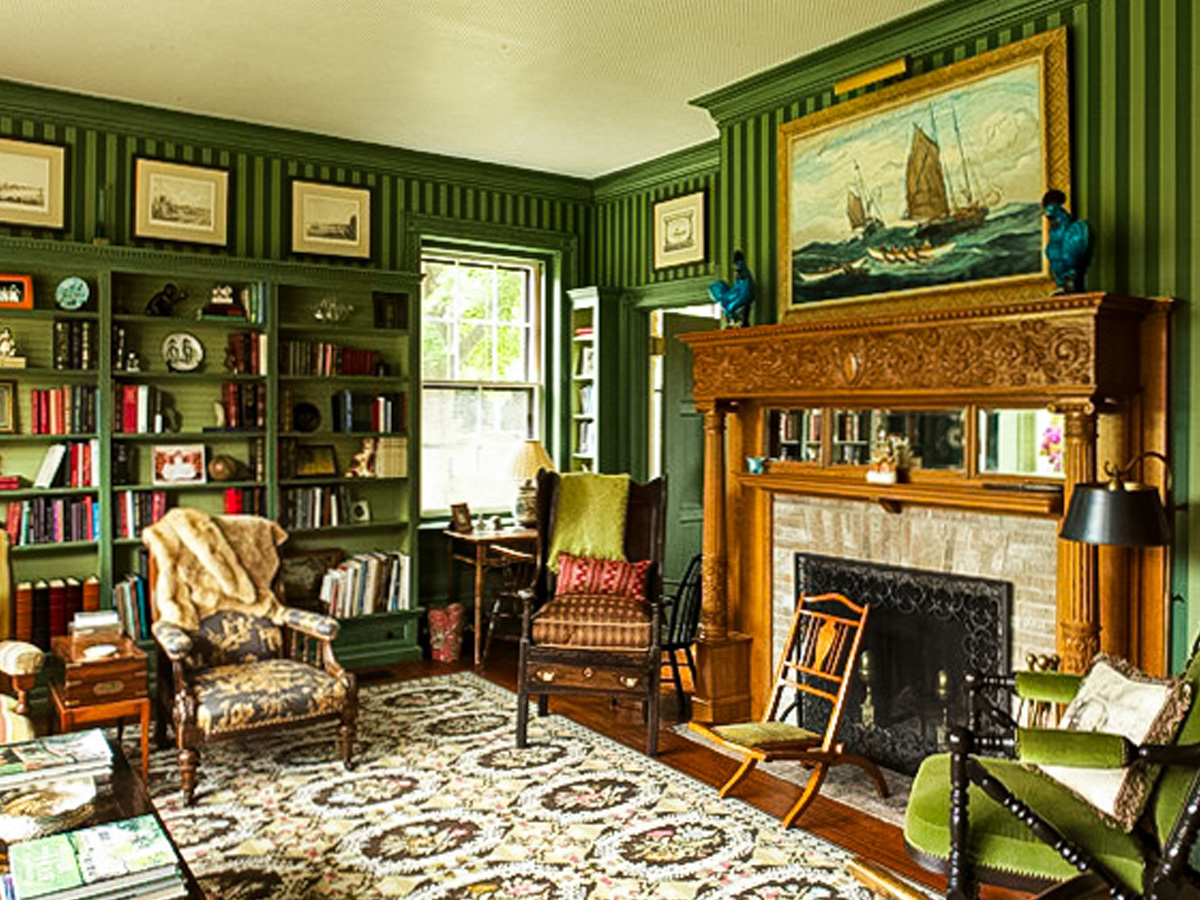Berkley House North Side
The LeRoy King House in Newport Rhode Island stands as an enlightening representation of the evolution of the Shingle Style into a more classic, historically influenced design typology during the rapid construction of grand houses in Newport during the Gilded Age. The house was designed by the notable firm McKim, Mead and White in 1885-1886. It already showed their movement away from the very informal and asymmetric Shingle Style cottages like the Isaac Bell, Frances Skinner, and Samuel Coleman Houses elsewhere in Newport for which they are now so famous. The design was created for LeRoy King, a wealthy merchant who was the brother of David King and son of Edward King, for whom the firm had previously done work on the significant enlargement of Kingscote (located across the street from the project site). Unlike many of the grand Newport mansions that would be built later in the Gilded Age, the house is still quite private and understated like its Shingle Style cousins, turning its face away from Bellevue Avenue and towards the side street of Berkeley Avenue.

Berkeley House North Elevation
Unlike many of the larger houses that used open wrought iron fencing to showcase and display the mansions and properties to the public, the property presented a high brick wall to the busy thoroughfare thereby asserting and creating a private enclave and garden for the owners of the house. LeRoy King was a young heir to a substantial fortune amassed through the China trade. In 1885, he and his wife, Ethel Rhinelander King, sought to establish themselves in Newport as so many others were doing after the William Backhouse Astors purchased Beechwood in 1881. With the Astors’ arrival in Newport, it was no longer a sleepy playground for the wealthy elite but became THE summer gathering spot of “The 400” that could be accommodated in Mrs. Astor’s New York Ballroom that defined those that we the true elite of New York Society. Currying favor with Mrs. Astor is something than anyone familiar with the television series “The Gilded Age” created by Lord Julian Fellowes will be very familiar with, but the Kings were a well-established family that felt no need for such showy displays.

Berkeley House South Side
In 1885, McKim, Mead and White were becoming the undisputed masters of the American Renaissance, crafting houses and mansions for many of Newport’s “cottagers” as well as working in other wealthy enclaves around New England. In retrospect, the LeRoy King House marked a subtle departure from their earlier informal Shingle Style projects in Newport showing a new focus on classical symmetry, proportion, and masonry construction. The Commodore Edgar House, designed by the firm around the same time elsewhere in Newport, also demonstrates many of these same aesthetic characteristics and developments.
The LeRoy King House exemplifies a period of transformation and transition of design philosophy. The central hall, large gabled masses, and picturesque window arrangements became hallmarks of McKim, Mead and White’s style following their more informal and relaxed Shingle Style period. However, unlike their grander Newport mansions, the LeRoy King House still adopted a more compact and intimate scale. The entrance being positioned on the north side facing Berkeley Avenue deviated from the typical Bellevue Avenue facing direction of the majority of houses, creating a far more private retreat than grand public edifice. It also illustrated the confidence of the King family in the security of its establishment among Gilded Age Newport Society.
The use of materials further underscores the transitional nature of this specific building design. The foundation utilizes traditional brick and dressed stone as opposed to the more rusticated stone of the Shingle Style. The house is clad in fireproof shingles, a testament to the interest in both practicality and aesthetics. This unique combination embodies the firm’s experimentation with materials, including “pebbledash,” during this period.

Berkeley House Living Room
The interiors of the LeRoy King House certainly showcase the firm’s evident design prowess. The living spaces of the house manage to be both grand and elegant, and yet still comfortable and understated. They include intricate natural and white-painted woodwork, as well as carefully curated Colonial Revival details reflecting the refined taste of the Gilded Age elite. The design studiously avoids the ostentation of gilding and polychrome of the other more palatial Newport building projects of that era. In addition to its design, the house incorporated cutting-edge technology for its time, including electric lighting and a central heating system.

Berkeley House Library Hearth
The LeRoy King House (also sometimes called Berkeley House) has been meticulously restored by the current owners, winning a Doris Duke Preservation Award in 2010. The building still carries enormous historical and architectural significance as it represents a pivotal moment in the evolution of McKim, Mead and White’s design philosophy, demonstrating their ability to adapt to emerging styles while retaining their signature quality and craftsmanship. The house also stands in contrast to the grand Beaux-Arts mansions that dominate Newport. It offers a more intimate and picturesque expression before the architecture continued to evolve towards the full-blown Beaux Arts and Châteauesque aesthetic of Ochre Court, the Breakers, the Elms and even McKim, Mead and Whites design for Rosecliff, among many other truly palatial designs of the later Gilded Age.
Today the LeRoy King House, although it is a private residence, continues to captivate lucky visitors and architectural scholars with its beauty and historical importance. It serves as a reminder of the enduring legacy of McKim, Mead and White, their adaptability in the face of evolving styles, and their commitment to creating not just grand structures, but also spaces imbued with elegance and functionality. It also illustrates a midpoint in the transition in Newport from the informal Shingle Style of the early 1880’s to the hyper-formal work of the “High Gilded Age” just 15 or 20 years later.
Looking to remodel your home? Let’s connect.
Join the Architectural Forum to stay up-to-date with architectural news from Rhode Island and abroad.
Ross Sinclair Cann, RA, AIA, LEED AP, is an author, historian, educator, and practicing architect living and working in Newport, RI. He studied with Professor Scully as an undergraduate at Yale and was a teaching assistant for Robert A.M Stern at the Columbia School of Architecture in New York.
At A4 Architecture + Planning we are expert at integrating building codes into our designs to provide safer and more long-lasting building solutions for our clients. If you are interested in learning more about what can do for you reach out to us at any time!
